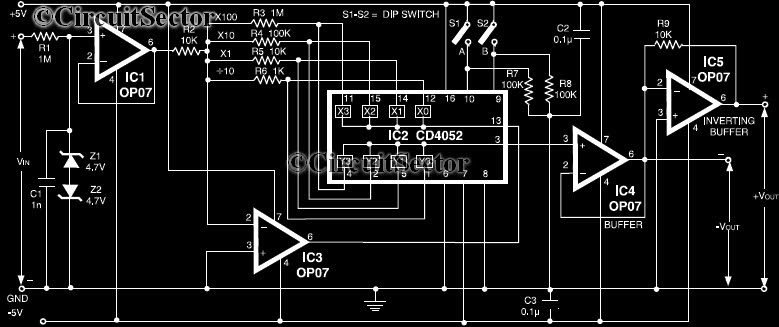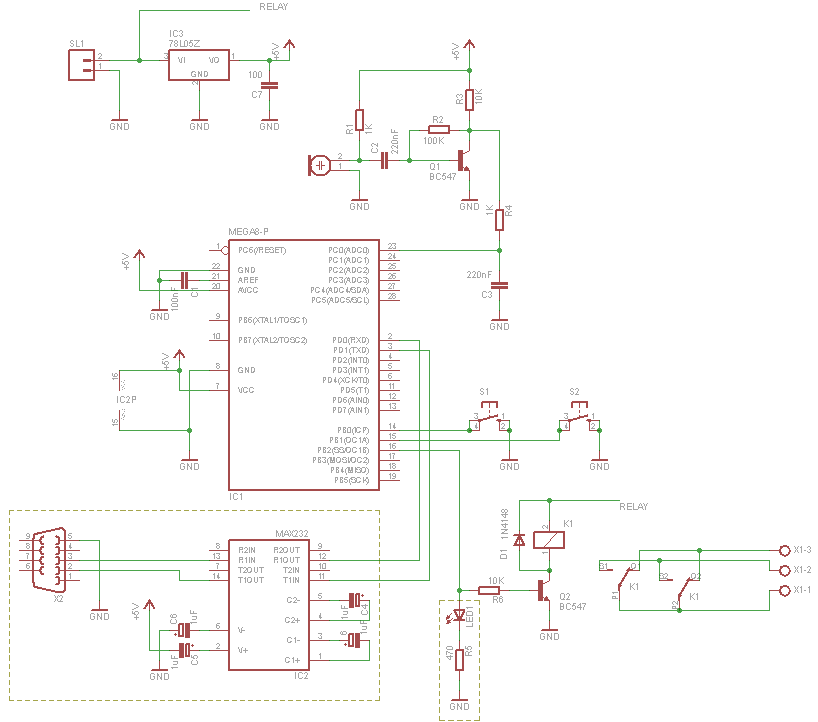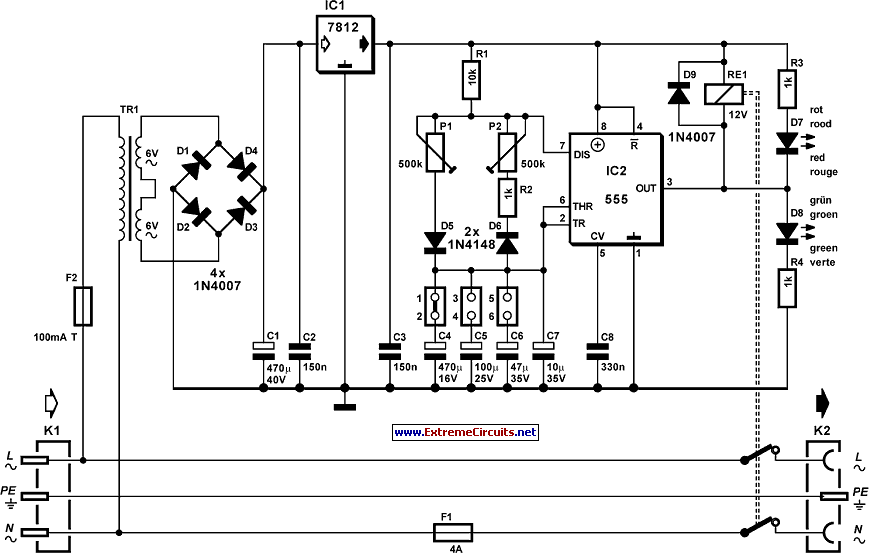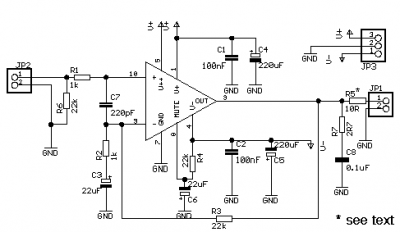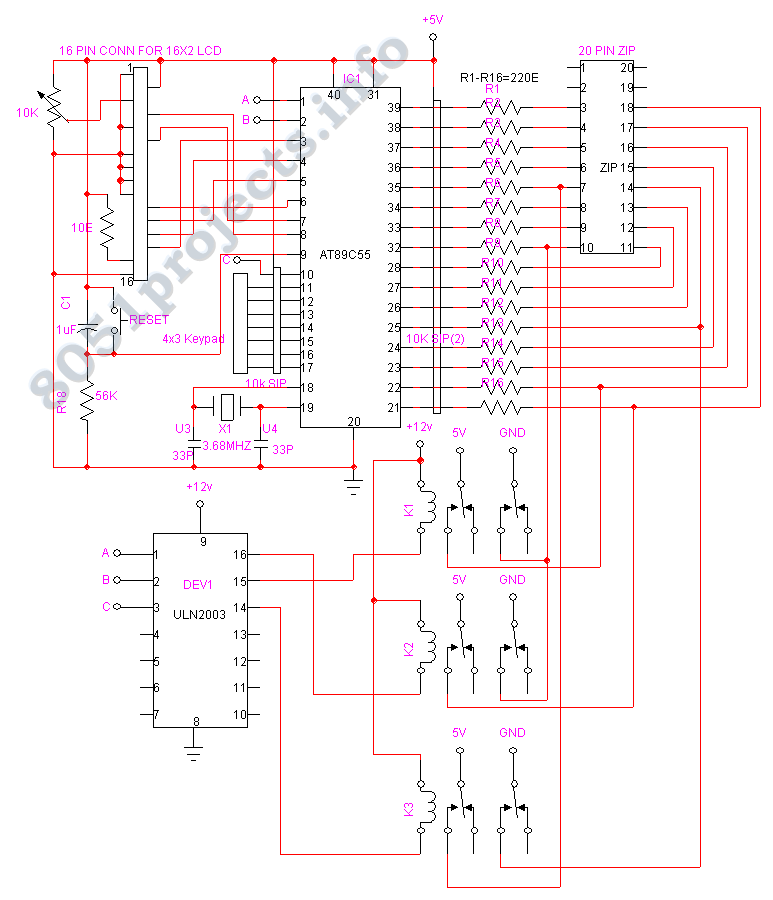
Digital Main Voltage Indicator
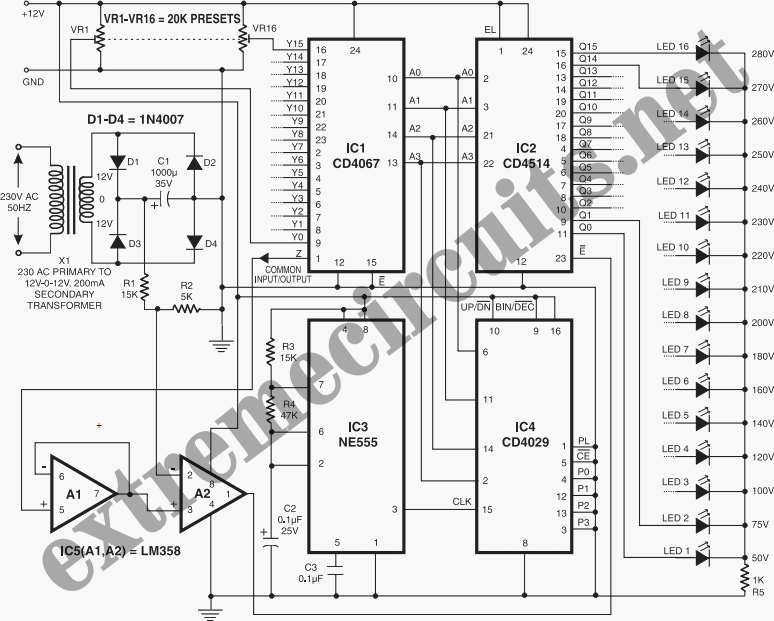
Continuous monitoring of mains voltage is essential in various applications, including manual voltage stabilizers and motor pumps. Although an analog voltmeter is cost-effective, it has several drawbacks due to its moving parts and sensitivity to vibrations. The solid-state voltmeter circuit presented here displays mains voltage with a resolution comparable to that of a general-purpose analog voltmeter. The mains voltage status is represented through an LED bar graph. Presets VR1 to VR16 are utilized to set the DC voltages corresponding to the 16 voltage levels within the 50-250V range, as indicated on LED1 to LED16, respectively. The LED bar graph is multiplexed from bottom to top using ICs CD4067B (16-channel multiplexer) and CD4029B (counter). The counter, clocked by an NE555 timer-based astable multivibrator, generates a 4-bit binary address for the multiplexer-demultiplexer pair of CD4067B and CD4514B. The voltage from the wipers of the presets is multiplexed by CD4067B, and the output from pin 1 of CD4067B is sent to the non-inverting input of comparator A2 (half of op-amp LM358) after being buffered by A1 (the other half of IC2). The unregulated voltage sensed from the rectifier output is applied to the inverting input of comparator A2. The output of comparator A2 remains low until the sensed voltage exceeds the reference voltage at the non-inverting input via buffer A1. When the sensed voltage drops below the reference voltage, the output of comparator A2 turns high. This high output from comparator A2 inhibits the decoder (CD4514) used to decode the output of IC4029 and drive the LEDs. Consequently, the LEDs of the bar graph illuminate up to the sensed voltage level, which is proportional to the mains voltage. Initial adjustment of each preset can be performed by applying a known AC voltage through an auto-transformer and adjusting the corresponding preset to ensure that only the LEDs corresponding to the applied voltage glow. It is recommended to use additional transformer, rectifier, filter, and regulator arrangements to obtain a regulated supply for the circuit's operation, ensuring consistent performance even when the mains voltage fluctuates between 50V and 280V. During laboratory testing, a regulated 12-volt supply was used for circuit operation.
The solid-state voltmeter circuit is designed to provide a reliable and accurate representation of mains voltage, making it suitable for applications that require continuous monitoring. The use of solid-state components eliminates the mechanical issues associated with analog voltmeters, such as wear and sensitivity to vibrations. The LED bar graph serves as a visual indication of the voltage level, allowing for quick assessment.
The circuit architecture is centered around a 16-channel multiplexer (CD4067B) and a binary counter (CD4029B), which work in tandem to select the appropriate voltage level for display. The NE555 timer configured as an astable multivibrator generates the clock signal required for the counter, ensuring that the multiplexing of the presets occurs in a timely manner. The output from the presets, which correspond to the set voltage levels, is routed through the multiplexer, allowing only the selected voltage to be passed to the comparator.
The comparator (LM358) plays a crucial role in determining when the sensed voltage exceeds the reference voltage. This functionality allows the circuit to accurately indicate voltage levels, ensuring that the LED bar graph reflects the true state of the mains voltage. The design incorporates a buffer to stabilize the reference voltage, enhancing the reliability of the voltage detection process.
For calibration, the use of an auto-transformer allows for precise setting of each preset, ensuring that the circuit can accurately represent varying input voltages. The recommendation to implement additional power supply components is crucial for maintaining circuit performance across a wide voltage range, thereby enhancing the robustness of the design.
Overall, this solid-state voltmeter circuit provides an efficient and effective solution for monitoring mains voltage, combining modern electronic components with practical design considerations to ensure accurate and reliable operation in various applications.Continuous monitoring of the mains voltage is required in many applications such as manual voltage stabilisers and motor pumps. An analogue voltmeter, though cheap, has many disadvantages as it has moving parts and is sensitive to vibrations.
The solidstate voltmeter circuit described here indicates the mains voltage with a resolution that is comp arable to that of a general-purpose analogue voltmeter. The status of the mains voltage is available in the form of an LED bar graph. Presets VR1 through VR16 are used to set the DC voltages corresponding to the 16 voltage levels over the 50-250V range as marked on LED1 through LED16, respectively, in the figure. The LED bar graph is multiplexed from the bottom to the top with the help of ICs CD4067B (16-channel multiplexer) and CD4029B (counter).
The counter clocked by NE555 timer-based astable multivibrator generates 4-bit binary address for multiplexer-demultiplexer pair of CD4067B and CD4514B. The voltage from the wipers of presets are multiplexed by CD4067B and the output from pin 1 of CD4067B is fed to the non-inverting input of comparator A2 (half of op-amp LM358) after being buffered by A1 (the other half of IC2).
The unregulated voltage sensed from rectifier output is fed to the inverting input of comparator A2. The output of comparator A2 is low until the sensed voltage is greater than the reference input applied at the non-inverting pins of comparator A2 via buffer A1. When the sensed voltage goes below the reference voltage, the output of comparator A2 goes high. The high output from comparator A2 inhibits the decoder (CD4514) that is used to decode the output of IC4029 and drive the LEDs.
This ensures that the LEDs of the bar graph are on` up to the sensed voltage-level proportional to the mains voltage. The initial adjustment of each of the presets can be done by feeding a known AC voltage through an auto-transformer and then adjusting the corresponding preset to ensure that only those LEDs that are up to the applied voltage glow.
It is advisable to use additional transformer, rectifier, filter, and regulator arrangements for obtaining a regulated supply for the functioning of the circuit so that performance of the circuit is not affected even when the mains voltage falls as low as 50V or goes as high as 280V. During Lab testing regulated 12-volt supply for circuit operation was used. ) 🔗 External reference
The solid-state voltmeter circuit is designed to provide a reliable and accurate representation of mains voltage, making it suitable for applications that require continuous monitoring. The use of solid-state components eliminates the mechanical issues associated with analog voltmeters, such as wear and sensitivity to vibrations. The LED bar graph serves as a visual indication of the voltage level, allowing for quick assessment.
The circuit architecture is centered around a 16-channel multiplexer (CD4067B) and a binary counter (CD4029B), which work in tandem to select the appropriate voltage level for display. The NE555 timer configured as an astable multivibrator generates the clock signal required for the counter, ensuring that the multiplexing of the presets occurs in a timely manner. The output from the presets, which correspond to the set voltage levels, is routed through the multiplexer, allowing only the selected voltage to be passed to the comparator.
The comparator (LM358) plays a crucial role in determining when the sensed voltage exceeds the reference voltage. This functionality allows the circuit to accurately indicate voltage levels, ensuring that the LED bar graph reflects the true state of the mains voltage. The design incorporates a buffer to stabilize the reference voltage, enhancing the reliability of the voltage detection process.
For calibration, the use of an auto-transformer allows for precise setting of each preset, ensuring that the circuit can accurately represent varying input voltages. The recommendation to implement additional power supply components is crucial for maintaining circuit performance across a wide voltage range, thereby enhancing the robustness of the design.
Overall, this solid-state voltmeter circuit provides an efficient and effective solution for monitoring mains voltage, combining modern electronic components with practical design considerations to ensure accurate and reliable operation in various applications.Continuous monitoring of the mains voltage is required in many applications such as manual voltage stabilisers and motor pumps. An analogue voltmeter, though cheap, has many disadvantages as it has moving parts and is sensitive to vibrations.
The solidstate voltmeter circuit described here indicates the mains voltage with a resolution that is comp arable to that of a general-purpose analogue voltmeter. The status of the mains voltage is available in the form of an LED bar graph. Presets VR1 through VR16 are used to set the DC voltages corresponding to the 16 voltage levels over the 50-250V range as marked on LED1 through LED16, respectively, in the figure. The LED bar graph is multiplexed from the bottom to the top with the help of ICs CD4067B (16-channel multiplexer) and CD4029B (counter).
The counter clocked by NE555 timer-based astable multivibrator generates 4-bit binary address for multiplexer-demultiplexer pair of CD4067B and CD4514B. The voltage from the wipers of presets are multiplexed by CD4067B and the output from pin 1 of CD4067B is fed to the non-inverting input of comparator A2 (half of op-amp LM358) after being buffered by A1 (the other half of IC2).
The unregulated voltage sensed from rectifier output is fed to the inverting input of comparator A2. The output of comparator A2 is low until the sensed voltage is greater than the reference input applied at the non-inverting pins of comparator A2 via buffer A1. When the sensed voltage goes below the reference voltage, the output of comparator A2 goes high. The high output from comparator A2 inhibits the decoder (CD4514) that is used to decode the output of IC4029 and drive the LEDs.
This ensures that the LEDs of the bar graph are on` up to the sensed voltage-level proportional to the mains voltage. The initial adjustment of each of the presets can be done by feeding a known AC voltage through an auto-transformer and then adjusting the corresponding preset to ensure that only those LEDs that are up to the applied voltage glow.
It is advisable to use additional transformer, rectifier, filter, and regulator arrangements for obtaining a regulated supply for the functioning of the circuit so that performance of the circuit is not affected even when the mains voltage falls as low as 50V or goes as high as 280V. During Lab testing regulated 12-volt supply for circuit operation was used. ) 🔗 External reference
Warning: include(partials/cookie-banner.php): Failed to open stream: Permission denied in /var/www/html/nextgr/view-circuit.php on line 713
Warning: include(): Failed opening 'partials/cookie-banner.php' for inclusion (include_path='.:/usr/share/php') in /var/www/html/nextgr/view-circuit.php on line 713
